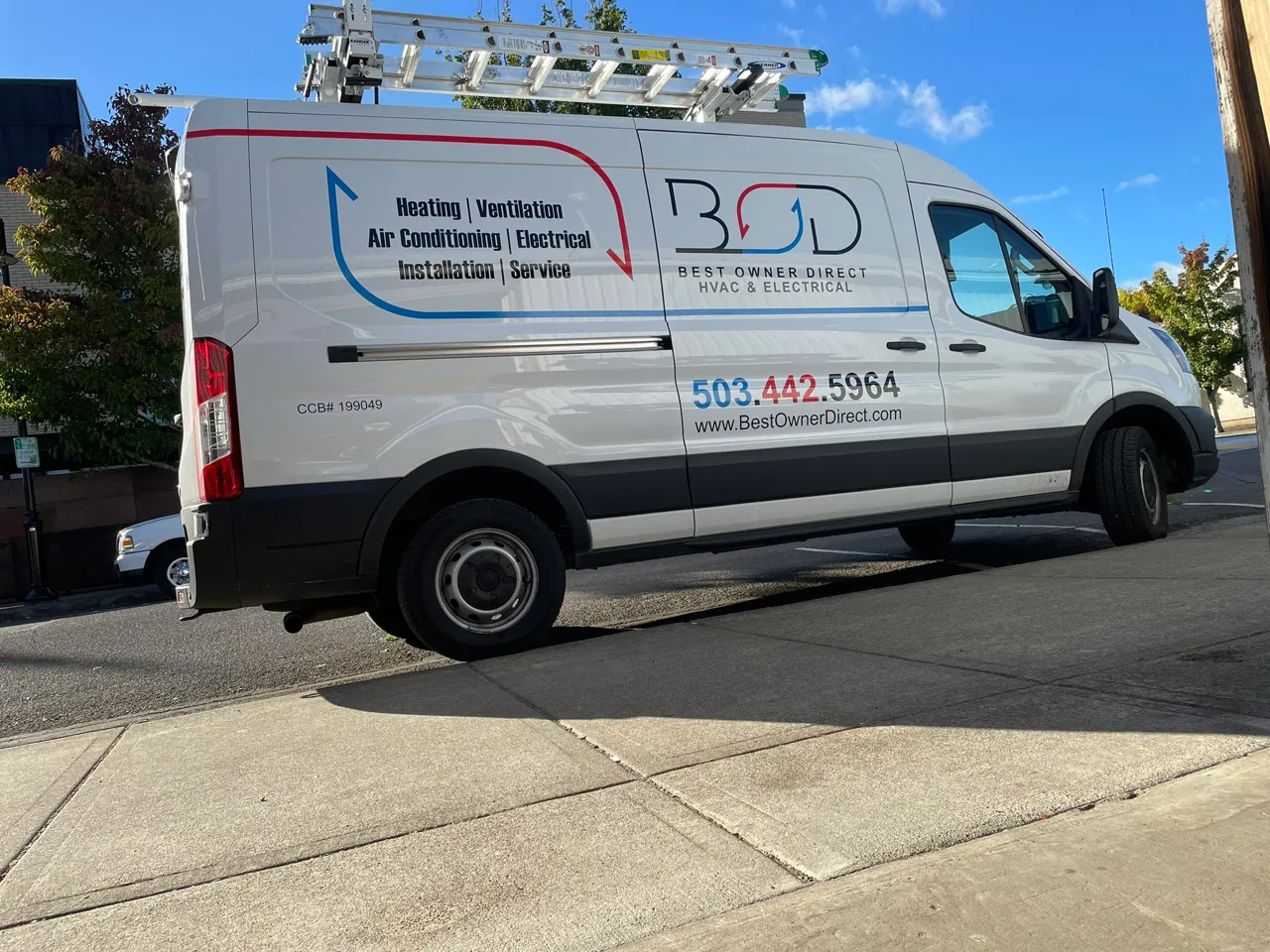Menu
Duct Cleaning in Newberg, OR
Improve comfort with duct cleaning from Best Owner Direct HVAC & Electrical in Newberg, OR. Remove dust and boost airflow. Schedule your cleaning today!

Duct Cleaning in Newberg, OR
Keeping your home’s ductwork clean is one of the most effective ways to protect indoor air quality, improve HVAC performance, and reduce allergy triggers. For homeowners in Newberg, OR, duct cleaning is particularly important because the Willamette Valley’s damp winters, seasonal pollen from vineyards and orchards, and increasing wildfire smoke all contribute to faster buildup inside ducts. This page explains what professional duct cleaning includes, the common problems seen in Newberg homes, the cleaning methods technicians use, recommended frequency, and how cleaning works together with duct sealing and filtration upgrades to deliver cleaner air and greater system efficiency.
Why Duct Cleaning Matters in Newberg
- Moisture and mold risks: Oregon’s wet winters encourage dust, pollen, and biological growth to settle where air is stagnant — attic and crawlspace ducts are common trouble spots.
- Seasonal smoke and particulates: Warm, dry summers and wildfire smoke bring fine particles into homes, which settle in ducts and recirculate when the system runs.
- Older home concerns: Many Newberg homes have disconnected or poorly insulated ducts in attics and crawlspaces, amplifying contamination and energy loss.
- Indoor air health: Cleaning ducts addresses accumulated dust, pet hair, pollen, smoke residue, and occasional mold or rodent debris that reduce air quality and force HVAC systems to work harder.
Common Duct Problems in Newberg Homes
- Heavy dust and lint buildup on supply registers and inside main trunks
- Pet dander and hair pushed into ducts by return airflow
- Mold or mildew growth on duct surfaces after roof leaks or high humidity events
- Rodent or bird debris such as nesting material and droppings in attic or soffit-connected ducts
- Disconnected or crushed flexible ducts reducing airflow and spreading debris
- Smoke residue from wildfires embedding in duct surfaces and filters
How Technicians Diagnose Duct Issues
A thorough duct cleaning begins with a complete inspection:
- Visual checks of returns, registers, plenums, furnace/air handler, and vents
- Camera inspections of trunk lines and inaccessible runs to identify gaps, debris, or growth
- Airflow and static pressure measurements to see whether duct restrictions affect performance
- Duct material identification (sheet metal, flex, fiberboard) to tailor the cleaning method
Professional Duct Cleaning Methods
Professionals tailor methods to the system and contamination type. Typical steps include:
- Negative pressure setup with a HEPA-rated vacuum to capture debris without recirculation
- Mechanical agitation using brushes, air whips, or tools to loosen buildup inside ducts
- Grille and register cleaning along with air handler compartments and coils
- HEPA-filtered vacuuming of trunk lines and plenums while the system is under suction
- Post-cleaning camera or visual inspection to confirm removal of deposits
- Sanitizing sprays (when needed) for mold or biological contamination, using HVAC-safe products
What Cleaning Can and Cannot Do
- Benefits: Reduces airborne dust and allergens, removes odors and smoke residue, improves airflow, and lowers strain on the HVAC system.
- Limits: Cleaning does not fix structural issues like leaks, gaps, or crushed ducts. Those require sealing or repairs. Cleaning also cannot prevent future buildup without better filtration and sealing practices.
Recommended Cleaning Frequency for Newberg Homes
- Every 3–5 years for standard households
- Every 1–2 years if occupants have asthma/allergies, multiple pets, or after renovations, wildfire smoke exposure, or mold concerns
- Immediately after water damage or confirmed mold growth, paired with remediation
Integrating Duct Cleaning with Sealing and Filtration
Duct cleaning works best when combined with upgrades that prevent future buildup:
- Duct sealing: Applying mastic or aerosolized sealants reduces attic/crawlspace infiltration and energy loss.
- Duct insulation: Protects ducts from condensation and temperature loss while discouraging biological growth.
- Filtration upgrades:
- MERV 8–11 filters for improved dust control
- MERV 13+ filters for allergy sufferers and wildfire-prone areas (ensure system compatibility)
- Whole-home HEPA or electronic air cleaners for maximum fine particle removal
- UV light systems: Reduce coil microbial growth but do not replace duct cleaning.
What to Expect During a Cleaning Visit
- Pre-cleaning inspection using cameras and airflow data
- Protective setup with floor and furniture coverings where vents are accessed
- Negative pressure and HEPA vacuuming with agitation tools to remove buildup
- Cleaning of air handler and registers for full system care
- Final inspection and report outlining cleaning results and repair recommendations
Long-Term Benefits for Homeowners
- Cleaner indoor air with reduced dust, allergens, and smoke residue
- Improved airflow for more consistent heating and cooling
- Enhanced HVAC efficiency and reduced wear on system components
- Greater comfort and peace of mind knowing your air supply is healthier
For Newberg residents, duct cleaning—especially when paired with sealing and filtration—offers a practical way to fight local contaminants like pollen, mold, and wildfire smoke while improving HVAC performance.
Take the Next Step
Protect your home and health with professional duct cleaning in Newberg. Contact Best Owner Direct HVAC & Electrical today through our Contact page to schedule service. Be sure to explore our current Promotions and flexible Financing Options to make cleaner air more affordable.


